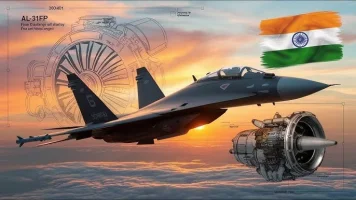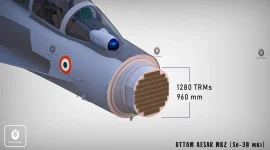- Views: 3K
- Replies: 11
In a significant advancement for India's indigenous military aviation, the Aeronautical Development Agency (ADA) is redesigning the internal weapons bay of the upcoming Advanced Medium Combat Aircraft (AMCA) Mk2.
The primary goal of this optimisation is to enable the fifth-generation fighter to carry up to six Astra Mk2 air-to-air missiles internally, substantially boosting its firepower while preserving its crucial stealth characteristics.
The AMCA is a cornerstone of India's future air power, designed as a multi-role aircraft with advanced stealth features, supercruise capability, and superior avionics.
A key element of its design is the internal weapons bay (IWB), which conceals armaments within the fuselage to minimise the aircraft's radar cross-section.
Initial plans had confirmed the aircraft's capacity to carry four Astra Mk1 missiles internally. However, through ongoing design refinements, the ADA is set to increase this capacity for the more advanced Mk2 version of the jet.
This upgrade will equip the AMCA Mk2 with six Astra Mk2 missiles, India's next-generation beyond-visual-range air-to-air missile (BVRAAM).
The Astra Mk2, which features a dual-pulse rocket motor for an extended range of approximately 160 kilometres, is expected to become a primary weapon for the Indian Air Force (IAF).
Carrying a larger missile load internally will allow the AMCA to engage multiple hostile aircraft simultaneously from a significant distance, all without compromising its low-observability.
The strategic implication of this enhancement is a considerable increase in the AMCA's combat effectiveness and survivability. By relying on its internal arsenal, the aircraft can perform air superiority missions in heavily contested airspace without the need for external pylons, which increase radar visibility.
This capability ensures the pilot can maintain the element of surprise—a critical advantage in modern aerial warfare—and allows a single aircraft to manage more threats, thereby increasing mission efficiency and providing a formidable asset for the nation's air defence.
Looking ahead, the ADA is also ensuring the AMCA platform is adaptable for future weaponry. Plans are underway to integrate the even longer-range Astra Mk3 missile, which is currently in development.
While the exact load configuration is yet to be finalised, this forward-looking approach highlights the AMCA's modular design, intended to accommodate evolving combat requirements and solidifying its role as a versatile and lethal platform for the IAF for decades to come.
The entire AMCA project, which received formal approval from the Cabinet Committee on Security, is projected to see its first prototype fly by 2029, with series production anticipated to start around 2035.



